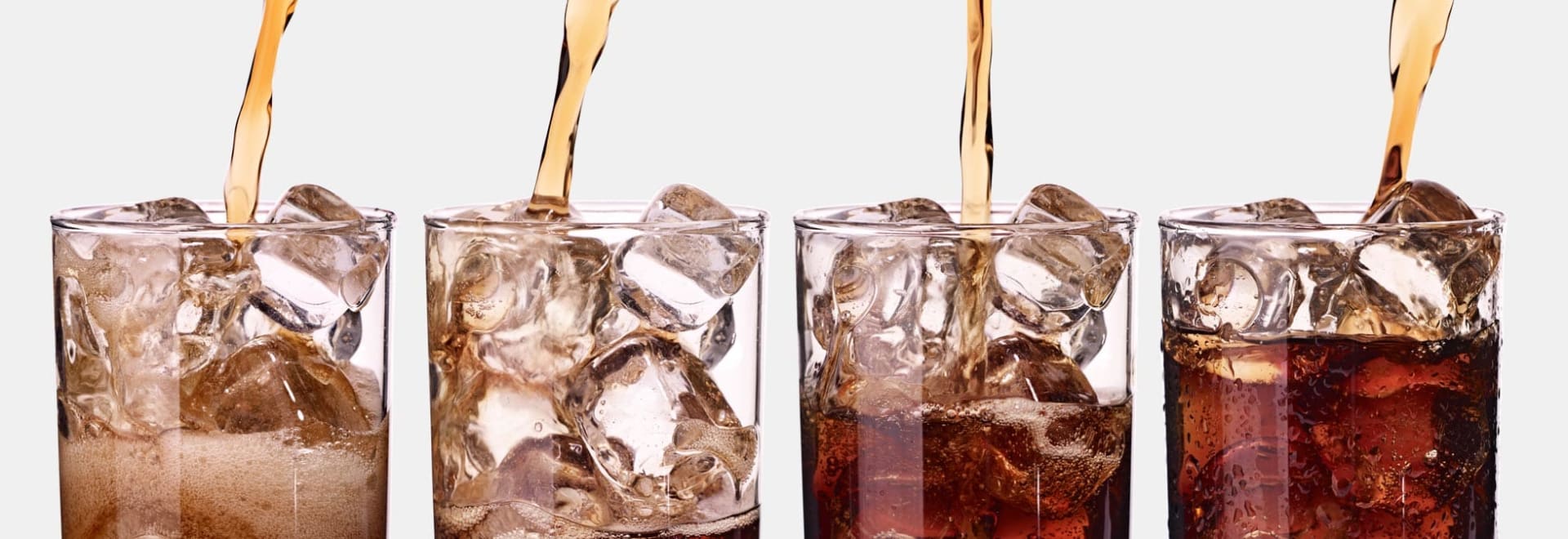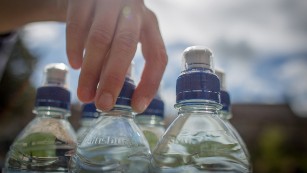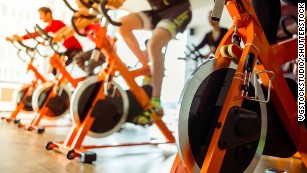From: http://www.consumerreports.org/soda/mounting-evidence-against-diet-sodas/
The Mounting Evidence Against Diet Sodas

Studies suggest possible links between low-calorie beverages and health risks, though more research is needed
By Julia Calderone
May 24, 2017
Many people think of diet sodas as healthy, low-calorie alternatives to sugary drinks. Yet a small but growing body of evidence suggests that diet sodas may have health downsides and may not even provide the benefits some people turn to them for, such as weight loss.
“Excess sugar intake is a problem in Western society because it contributes to obesity, diabetes, and other conditions,” says Matthew P. Pase, Ph.D., a research fellow in neurology at the Boston University School of Medicine. “We know that diet beverages are becoming more popular, but we don’t have a lot of research into the effects of diet beverages on different aspects of health.”
The topic deserves closer inspection, given the widespread popularity of these drinks. According to a 2016 study published in the Journal of the Academy of Nutrition and Dietetics, nearly half of adults and a quarter of children in the U.S. consume artificial sweeteners—and the majority do so on a daily basis. Diet drinks make up the bulk of the intake.
Here, what we know so far about diet sodas and their role in health, and what you can do to make smart beverage choices in the meantime.
Not So Heart Smart?
The strongest evidence so far links regular diet soda intake with cardiovascular conditions, such as stroke and heart attack, as well as type 2 diabetes and obesity (which are also risk factors for cardiovascular disease), says Ralph L. Sacco, M.D., professor of neurology at the University of Miami Miller School of Medicine. For example, in April, a widely reported study of about 4,400 people age 45 and older found that those who drank one or more diet sodas every day were three times more likely to have a stroke than those who didn’t, says Pase, who led the study. The research was published in the American Heart Association journal Stroke.
This study had several limitations and didn’t prove that diet sodas themselves caused people to have strokes, Sacco says. It could be that people who drink diet sodas are in poorer health than people who don’t, for instance. But the findings do jibe with previous research, he says.
For example, three large studies published between 2007 and 2009 found that people who drank diet sodas regularly were more likely to develop type 2 diabetes and had between 30 and 55 percent higher risk of metabolic syndrome (a constellation of health problems that could increase the risk of type 2 diabetes, heart disease, and stroke) than those who didn’t. Two other studies from 2012 further bolstered these results: Researchers linked daily diet soda consumption to about a 45 percent higher risk of heart attack, stroke, and early death in one study of about 2,600 people; and about 30 percent increased risk of hemorrhagic stroke—a less common type of stroke where a ruptured blood vessel or burst aneurysm causes loss of blood flow to the brain—in the other study of 130,000 people.
Past research has also found links between diet sodas and conditions such as depression or pre-term delivery. For example, one study of almost 320,000 people published in the journal PLoS One in 2014 found that those who drank four or more cans of diet soda each day were about 30 percent more likely to be diagnosed with depression than those who didn’t.
A Cautious Interpretation
The studies linking diet sodas and cardiovascular risk are intriguing, says Sacco, but they still need to be repeated in more rigorous settings. For example, he says, all of these studies relied on participants self-reporting their dietary habits, which can introduce error because people don’t always remember what they ate. Additionally, those who drink diet sodas may already be at increased risk of conditions such as diabetes or obesity because they are unhealthy to begin with. For example, someone who is overweight may have switched from regular soda to diet soda to help control an already burgeoning waistline.
And not every study has shown that diet sodas negatively affect health. For example, in 2012 researchers from the Harvard School of Public Health analyzed the drinking habits of almost 43,000 men and found that those who drank sugary drinks had a higher risk of coronary heart disease, but those who drank diet sodas did not.
Another reason scientists hesitate to say definitively that diet sodas are bad for your health is that they aren’t sure how they increase disease risk. Sacco believes the ingredients in the drinks, such as artificial sweeteners, may damage blood vessels—possibly explaining their link to diseases such as diabetes and stroke. Some evidence has also suggested that the artificial sweeteners in diet sodas can cause inflammation, a condition often associated with heart disease.
It’s also possible that the artificial sweeteners commonly used in diet sodas may “trick” the brain into craving rich, high-calorie foods, leading to weight gain. They may also cause changes in hormone levels or gut bacteria, both of which play a role in weight and insulin management. For example, a study published in the journal Nature in 2014 found that artificial sweeteners altered the gut bacteria in people and mice, increasing their risk of glucose intolerance, a condition often preceding diabetes. However, “we’re not sure of the mechanism at all,” says Sacco, and all of these ideas warrant larger, more rigorous studies.
Do you have tips for cutting back on your soda habit?
Let us know in the comment section below.
What to Do
“In general, your best bet is to avoid regular and diet sodas altogether,” says Orly Avitzur, M.D., Consumer Reports’ medical director. “They offer little nutritional benefit, and in some cases, diet sodas can cause headaches or make you overeat.” For example, shortly after the artificial sweetener aspartame came onto the market in the late 1990s, one of the biggest complaints the Food and Drug Administration received about the sweetener was regarding headaches. No scientific studies have proved that aspartame or diet sodas in general cause headaches, but a review of evidence published in The Clinical Journal of Pain in 2009 suggests that large amounts of the sweetener—such as that in five or more diet soda drinks—could trigger or make headaches worse in people who are already susceptible to migraines.
In addition to diet sodas, low-calorie sweeteners are also used in some iced teas, coffee drinks, and juices. Even some “healthy-sounding" drinks contain them. For example, Bai Antioxidant Infusion drinks, in flavors such as Brasilla Blueberry and Malawi Mango, claim no artificial sweeteners on the label, but a peek at the ingredient list reveals the low-calorie sweeteners erythritol and stevia extract. Sparking Ice, which is labeled “naturally flavored sparkling water,” contains 3 percent fruit juice as well as sucralose, an artificial sweetener commonly known as Splenda. Flavored versions of Pedialyte, a popular rehydration and electrolyte drink for children, also contain sucralose.
Not all public health experts say you must cut out diet sodas completely, however. In response to the recent Stroke study, Rachel K. Johnson, Ph.D., M.P.H., R.D., past chair of the American Heart Association’s Nutrition Committee and professor of nutrition at the University of Vermont, said that limiting sugars is still important for health, “and until we know more, people should use artificially-sweetened drinks cautiously.”
In a statement following the Stroke study, The Calorie Council, an organization representing the diet food and beverage industry, said there’s no reason to give up your diet soda habit just yet, because artificial sweeteners have been reviewed by the Food and Drug Administration and are deemed safe, and that evidence of their health impacts is still limited.
In the end, the occasional soda—with sugar or artificial sweeteners—is probably fine. But your best bet the vast majority of the time, says Avitzur, is to stick with water, plain or sparkling. If you find unflavored water boring, add a splash of bitters with a slice of lemon or lime.
Julia Calderone
I'm a former scientist, using words and an audio recorder as my new research tools to untangle the health and food issues that matter most to consumers. I live in Brooklyn, N.Y., where I cook as much as possible. You can find me in the grocery aisle scrutinizing the fine print of every food item I put into my cart. Follow me on Twitter @juliacalderone.




